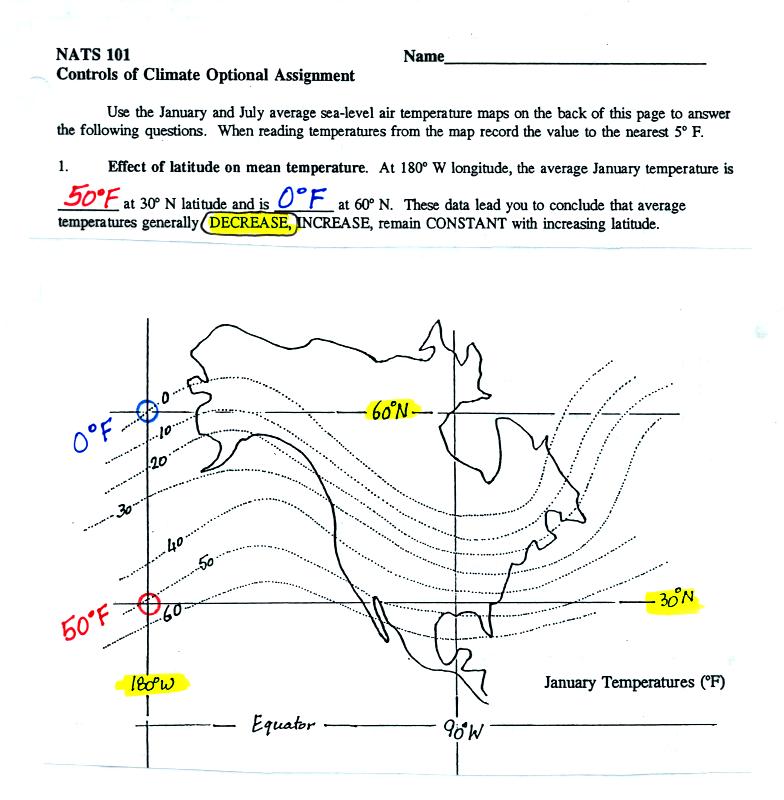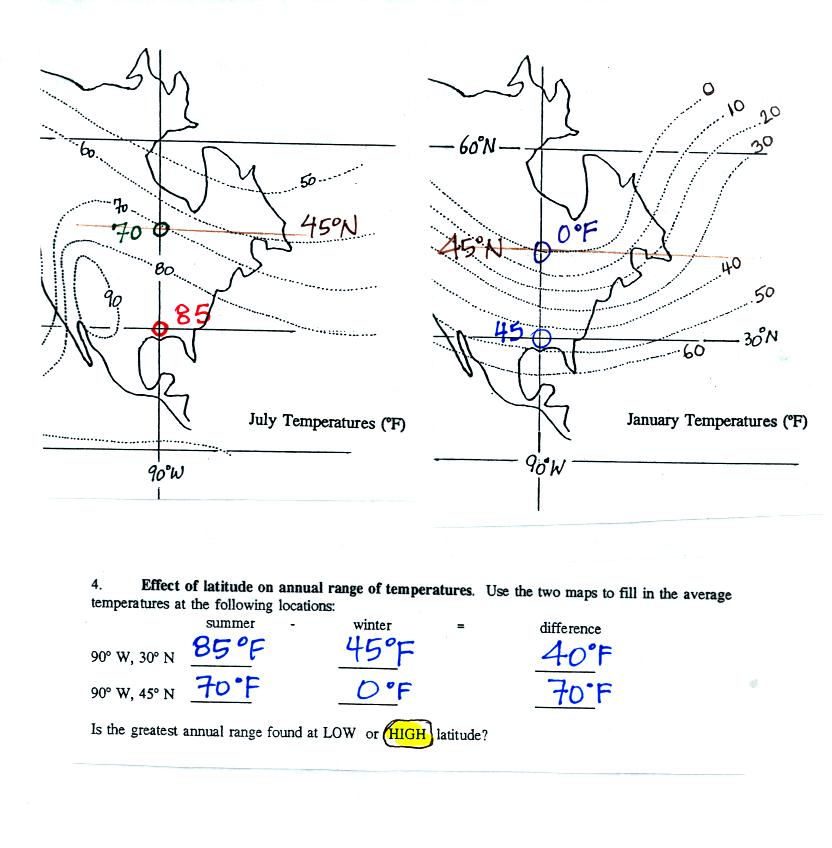Answers to the Controls of
Temperature Optional Assignment
(Your numbers may differ somewhat
from those given below, but you
should reach the same conclusions)

Average temperatures generally decrease with increasing
latitude. It is usually colder in Canada than it is in
Mexico. The
north-south temperature gradient is most pronounced in the winter.

Oceans cool more slowly than land in the winter. Water has a
higher specific heat than soil so more energy must be removed from
water. Also as soon as the surface waters cool they can sink and
be replaced by warmer water.
Winds blow from west to east at middle latitudes. The greatest
moderating effect from the oceans is felt along the west coast.
The east coast feels the effect of ocean to the east but westerly winds
bring in cold air from the interior.

Again the greatest moderating effect of the oceans (cool summers) is
found along the west coast. Note the hottest temperatures on this
map are found in the desert SW of the US. It begins
to cool
somewhat as you move south toward the equator. The
hottest regions on earth are near 30 latitude, not at the equator.


The annual range of temperature would be even smaller at the
equator. Sometimes just a degree or two on islands in the middle
of the ocean near the equator.




